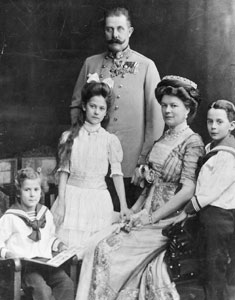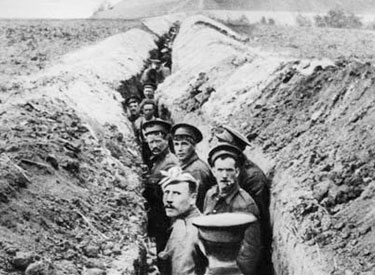World War I
What was the war about?

It is generally accepted that the first world war began on 28th June 1914. It was directly triggered by the assassination of the leader of Austria-Hungary, Franz Ferdinand and his wife, who went on a trip to Serbia to ease tension between the two countries. As his motorcade was driving, a terrorist from the Black Hand shot and killed him and his wife. Austria-Hungary considered this an act of war by the people of Serbia and promptly declared war on Serbia.
While these chain of events directly led to the fighting, the actual root causes are much deeper. Below is an overview of the most popular reasons that are cited as the causes of World War 1.
Alliances
An alliance is an agreement made between two or more countries to give each other help when required. When an alliance is signed, those countries become known as Allies.
A number of alliances had been signed by countries between the years 1879 and 1914. These were important because they meant that some countries had no option but to declare war if one of their allies declared war first. Before World War 1, the following alliances existed:
- Russia and Serbia
- Germany and Austria-Hungary
- France and Russia
- Britain, France and Belgium
- Japan and Britain

Imperialism
Imperialism is when a country takes over new lands or countries and makes them subject to their rule. By 1900 the British Empire extended over five continents and France had control of large areas of Africa. With the rise of industrialism countries needed new markets. The amount of lands 'owned' by Britain and France increased the rivalry with Germany who had entered the scramble to acquire colonies late and only had small areas of Africa.
Militarism
Militarism means that the army and military forces are given a high profile by the government. The growing European divide had led to an arms race between the main countries. The armies of both France and Germany had more than doubled between 1870 and 1914 and there was fierce competition between Britain and Germany for mastery of the seas. The British had introduced the 'Dreadnought', an effective battleship, in 1906. The Germans soon followed suit introducing their own battleships. The German, Von Schlieffen also drew up a plan of action that involved attacking France through Belgium if Russia made an attack on Germany.
Nationalism
Nationalism means being a strong supporter of the rights and interests of one's country. The Congress of Vienna, held after Napoleon's exile to Elba, aimed to sort out problems in Europe. Delegates from Britain, Austria, Prussia and Russia (the winning allies) decided upon a new Europe that left both Germany and Italy as divided states. Strong nationalist elements led to the re-unification of Italy in 1861 and Germany in 1871. The settlement at the end of the Franco-Prussian war left France angry at the loss of Alsace-Lorraine to Germany and keen to regain their lost territory. Large areas of both Austria-Hungary and Serbia were home to differing nationalist groups, all of whom wanted freedom from the states in which they lived.
What happened?

World War I was fought from 1914-1918. The conflict was between the central powers and the allied powers. The Allied Powers consisted of France, Russia, the United Kingdom, Canada, Italy, and the United States. The United States did not enter into battle until 1917, and proved to be a deciding factor in the war. Their opposition, the Central Powers, were made up of Germany, Austria, and the Ottoman Empire.
The war brought forth many new types of fighting, many which had never been conceived in thought until they were put into action by the soldiers. These included things such as Trench-Warfare, the Machine Gun, and the use of tanks. These new forms of combat made it a tough war to fight, with their often being cases of a stalemate, and no movement along the battle front. This was due in large part to it being a young style of war: there was no experience on either side on how to effectively use these new weapons and materials.
It was fought as a two front war: battle in the east, and fighting in the west. This was the downfall of the Central Powers, as they were not strong enough to contain pressure from Russia on the east, and France and the rest of Europe coming from the west. This caused the downfall of the Empire and created a long difficult economic time for the countries that were part of the Central Powers.
The war ended on November 11, 1918. Germany was left to pay for the war, and Austria was made into many smaller countries. In conclusion, what should have been a small war between Serbia and Austria-Hungary, escalated into a war that would end up killing millions of people and pave the way to World War II.
How many people died?
The total number of military and civilian casualties in World War I was over 35 million. There were over 15 million deaths and 20 million wounded ranking it among the deadliest conflicts in human history.
The total number of deaths includes about 10 million military personnel and about 7 million civilians. The Allied Powers lost about 6.0 million soldiers while the Central Powers lost about 4.0 million.
About two-thirds of military deaths in World War I were in battle, unlike the conflicts that took place in the 19th century when the majority of deaths were due to disease. Improvements in medicine as well as the increased lethality of military weaponry were both factors in this development. Nevertheless disease, including the Spanish flu, still caused about one third of total military deaths.